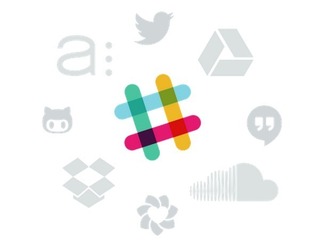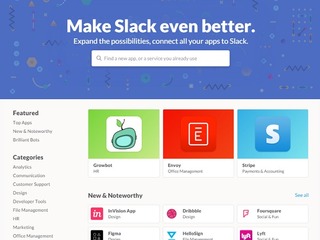
Slack debuts first TV ads; is it worried about competition?
Facebook At Work is set to be available wide very soon, so perhaps Slack is trying to stay ahead

At Vator Splash LA in October, Michael Dubin, founder and CEO of Dollar Shave Club, got on stage to talk about what it means to build a brand versus building a product. Specifically how to get people to first pay attention and get them to come to your site in the first place.
That company has had great marketing with a series of humorous videos that helps differentiate it from the competition, while also serving to bring new customers in, who then see get to how great the product is once they try it out.
Now Slack is trying to do something similar, launching its a new ad campaign, called "Teams Do Amazing Things," a series of funny commercials that show, not only what the service can do, but that they allow the most different kinds of creatures to work well together.
One, entitled "Animals," shows animals, from lions to rabbits, to gophers to sloths, can all benefit from using Slack, and can even find harmony in the service.
Another, entitled, "Spaceship," is a similar concept done in the animation style of a 1920s cartoon.
While Slack had some ads running as b-roll in select movie theaters earlier this fall, these are the company's first commercials for TV. They will run "some time in the new year," a company spokesperson told me, and "they'll start locally, rolling out nationally later in the year."
No specific regions are being revealed at the moment .
These are both well put together spots, and they will surely attract some attention, but the real question is why Slack felt the need to do this kind of advertising.
After all, Slack had 1.7 million daily active users as of October, up 55 percent from the 1.1 million it had in June. It also has 470,000 paid seats, up 56 percent from 300,000. The company is obviously growing tremendously fast.
So, again, why start a marketing push? There's one big reason I can see: the impending wide release of Facebook at Work, which will reportedly be available to all companies starting early next year.
This will come around a year after Facebook at Work was first released, in pilot mode, in January of 2015. Since then it has been invite only, and roughly 300 enterprise clients signed up, including Heineken, Stella and Dot, and Century 21.
In October, Facebook at Work signed up its first bank, the Royal Bank of Scotland. Facebook at Work will be rolled out to 30,000 of the bank's employees by March of next year. By the end of next year its other 70,000 employees will be signed on. Those 100,000 users will also make the Royal Bank of Scotland the service's largest client yet.
With Facebook's tremendous user numbers, 1.55 billion as of the third quarter of this year, Slack has to be at least a little bit worried about suddenly being overshadowed.
Releasing a commercial, though, does highlight one very important differentiation between the two: the bottom up approach of Slack, as compared to the top down approach of Facebook at Work.
One thing that I, personally, find somewhat perplexing about Facebook at Work is that, instead of copying the Yammer model, in which it would pitch to employees, who would invite others to join, creating word of mouth inside a company, Facebook is taking a top down approach. Facebook at Work has been pitched to the top brass at companies, getting them to buy into the solution, and then distribute it to employees.
Slack, meanwhile, takes the opposite approach, even going so far as to offer a free plan, "for small teams, casual users, and anyone who wants to evaluate Slack." This plan comes with 10,000 message searchable archive, 5GB total storage and five service integrations, like Twitter, Google Docs, Dropbox, GitHub and others.
So any employees are free to join, and if enough do then, presumably, the company will begin to pay for one of the larger plans, paying only for the people who are using it, rather than the old model, where companies had to pay for a certain number, if those seats weren't going to be filled.
Releasing a commercial, and appealing directly to users, could only work with this type of approach, meaning that Slack is using every advantage it has to try to stay ahead of the oncoming competition.
The ads were first reported on by TechCrunch.
Related News


Slack teams with top VCs for $80M developers fund

Facebook at Work will available to everyone soon

